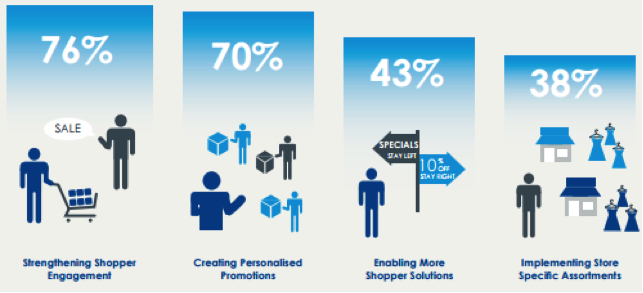IDC HPC Forum
9/6/16 – 9/8/16

In today’s retail marketplace, customers want it all – the convenience of shopping online from any location and the hands-on experience of browsing through a brick and mortar store. We recognize these preferences because retailers of all shapes and sizes are harnessing the power of Big Data to better understand customer behaviors in order to drive sales and increase satisfaction. Customer insight is key to success in this evolving industry, therefore brands must learn to effectively process and store data across all channels to secure competitive advantage.
With a growing population of multichannel shoppers, retailers are challenged to create a seamless shopping experience, from the moment shoppers enter a store or access online content, to checkout. Yet many brands have limited knowledge of their customers, knowing as little as 15% of their preferences and purchasing behaviors. Savvy retailers are striving to close the gap, looking to these multichannel sources to gain valuable insight:
Big Data analytics has become a critical component of modern retail, so much so that survival hinges on a multichannel strategy that can identify and capitalize on patterns and emergent trends. Brands are now taking greater advantage of data to increase sales and enhance services across a variety of channels.

Source: The Secret Weapon in Retailers’ Armoury, Xchanging Whitepaper 2014
Leveraging an abundance of multichannel data presents both valuable opportunities and technological issues for today’s retailers. The problem is, Big Data is truly massive. Traditional storage methods and legacy systems are no longer adequate to support the rising demand for data storage and analytics.
To address these challenges, retailers are investing aggressively in scalable, high-performance platforms to efficiently store growing volumes of data. Big Data platforms deliver a purpose-built infrastructure with the capacity to automate the data collection process, which improves business relationships, increases customer retention, and boosts revenue. Additional solutions such as object storage can provide lower storage costs and extensive scalability to accommodate current and future data growth.
Today’s shoppers expect a seamless, multichannel experience across websites, digital applications, and physical stores. The trail of data they leave behind is the key to delivering this experience, unlocking enormous financial gains, and brand longevity. Big Data analytics and advanced storage techniques are enabling retailers to extract valuable insight that helps them deliver a more holistic view of the customer, drive targeting marketing, and provide a convenient, reliable, and personalized shopping experience.